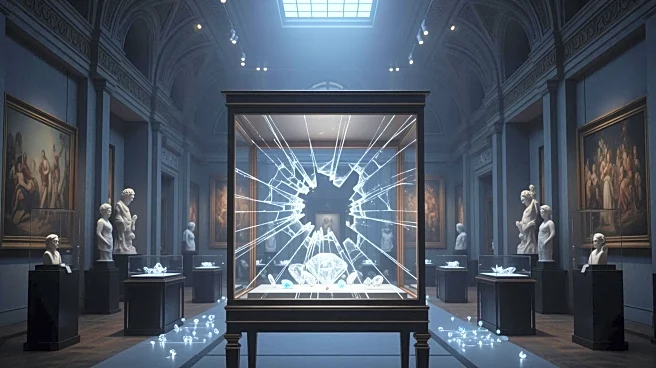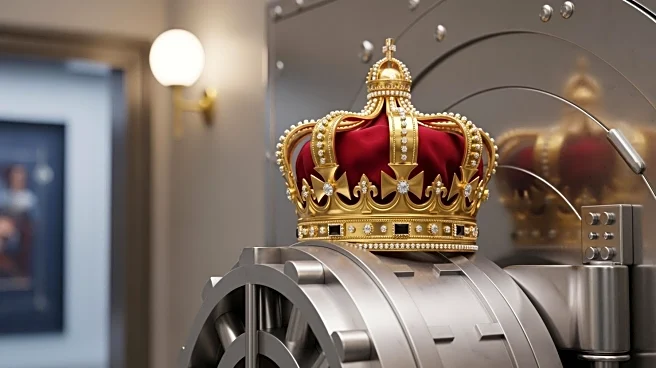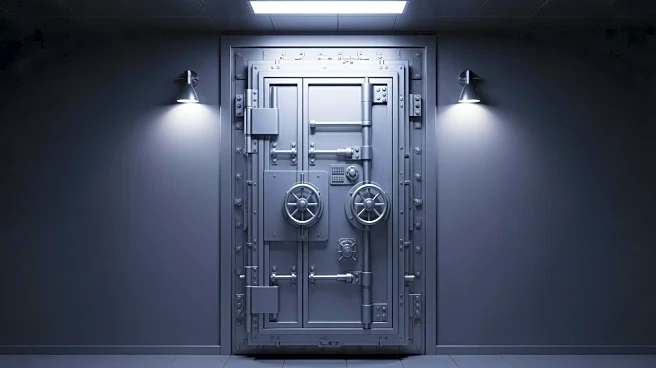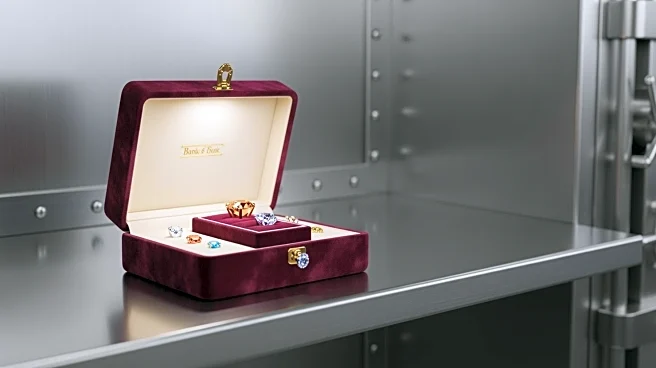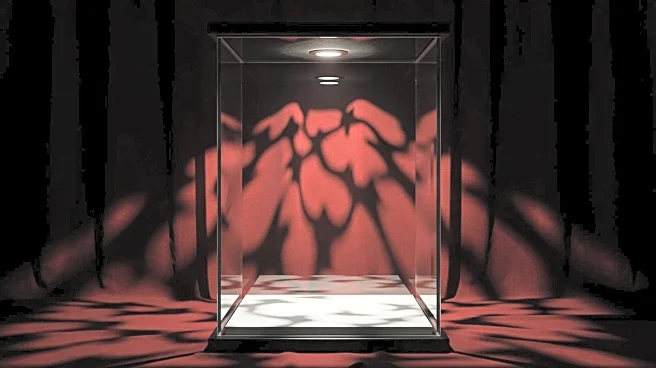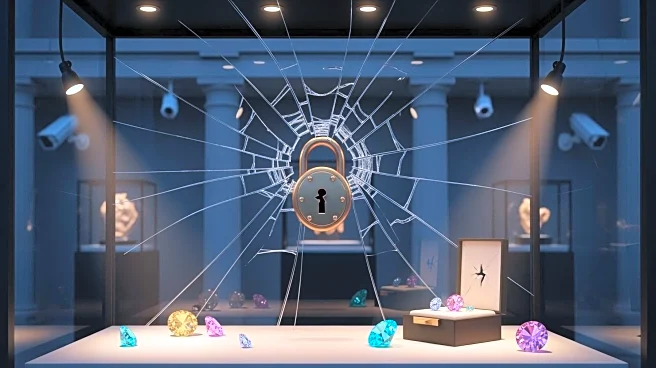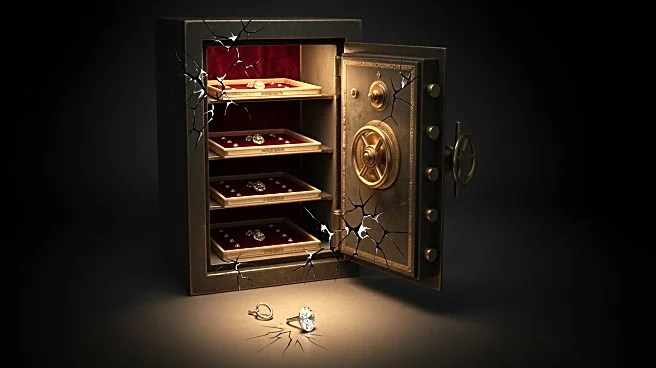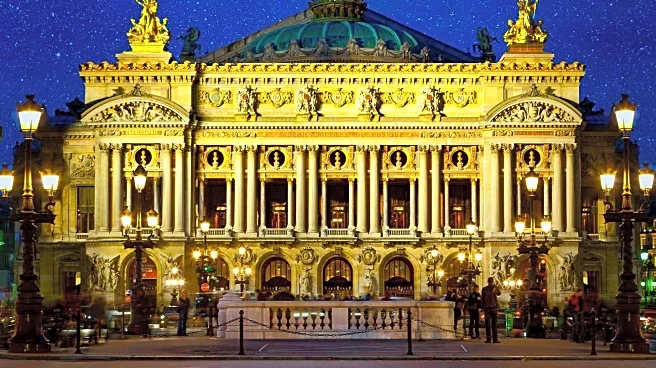What's Happening?
French detectives are investigating a major theft at the Louvre Museum, where $100 million worth of France's crown jewels were stolen. The heist, which occurred on October 19, is suspected to be an inside
job involving a security guard. Digital forensic evidence suggests that the guard was in contact with the thieves prior to the robbery. The thieves used a second-floor balcony, not covered by security cameras, to enter and exit the museum quickly. The stolen items include a sapphire diadem, necklace, and earrings linked to historical figures such as Queens Marie-Amelie and Hortense, and Empress Marie-Louise. Investigators believe the jewels may have been broken up for sale, and a wealthy collector could have orchestrated the crime.
Why It's Important?
The theft of such significant cultural artifacts highlights vulnerabilities in museum security systems, potentially prompting institutions worldwide to reassess their security measures. The involvement of organized crime suggests a sophisticated network capable of targeting high-value assets, which could lead to increased scrutiny and regulation of art and antiquities markets. The loss of these jewels represents not only a financial blow but also a cultural loss, as they are part of France's national heritage. The incident may influence public policy regarding the protection of cultural assets and the prosecution of art-related crimes.
What's Next?
The Louvre's director has offered her resignation following the heist, and the most valuable jewels have been moved to the Bank of France for safekeeping. Investigators are continuing to pursue leads, although recovery of the jewels seems unlikely. The case may lead to tighter security protocols at museums and increased collaboration between international law enforcement agencies to combat art theft. The investigation could also uncover more details about the organized crime network involved, potentially leading to further arrests and prosecutions.
Beyond the Headlines
The heist raises ethical questions about the security and preservation of cultural heritage. It underscores the need for museums to balance public access with the protection of valuable artifacts. The involvement of a security guard in the crime points to potential issues of trust and oversight within museum staff, suggesting a need for more rigorous background checks and monitoring. The incident may also spark discussions about the role of private collectors in the art world and their influence on the illegal trade of cultural assets.
